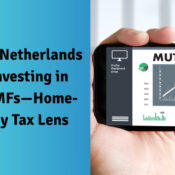Canada/Netherlands NRI: Investing in Indian MFs—Home-country Tax Lens

When Priya moved from Mumbai to Toronto, one of the first things she wanted to do was keep a piece of her India portfolio alive. Her parents were still there, her long-term goals were tied to rupee assets, and Indian mutual funds had given her stable, tax-efficient growth for years.
Her Canadian tax consultant, however, noticed a concern in her mutual fund holdings, “These may qualify as PFICs,” he said.
That’s when Priya realised: investing as an NRI isn’t just about returns, it’s also about where and how those returns are taxed.
Same Mutual Fund, Different Tax Story
Indian residents see mutual funds as efficient; equity funds get concessional rates, debt funds are taxed on redemption, and SIPs enjoy compounding with minimal friction.
But once you move abroad, your country of residence starts taxing your global income. So even if you invest in India, the home country may see and tax those gains differently.
That’s where things get tricky, especially for NRIs living in countries like Canada and the Netherlands, where local tax laws don’t treat Indian mutual funds the same way India does.
The Canadian Twist: PFIC Rules and Annual Taxation
For NRIs in Canada, Indian mutual funds are usually classified as PFICs (Passive Foreign Investment Companies) under Canadian tax law.
That classification changes everything.
Instead of being taxed only on redemption, your mutual fund holdings could be taxed every year on unrealised gains even if you haven’t sold a single unit.
Canadian tax rules offer different methods of calculation (like “Mark-to-Market” or “QEF elections”), but in most cases, the result is additional reporting, higher compliance, and sometimes double taxation unless carefully planned.
Essentially, Indian mutual funds can translate into annual tax reporting challenges in Canada.
The Dutch Perspective: Box 3 Taxation
In the Netherlands, things play out differently. Dutch residents are taxed not on actual income or gains, but on a deemed rate of return on their net wealth, called Box 3 taxation.
So your Indian mutual funds, along with your other global assets, are considered part of your overall wealth pool. The Dutch tax office then assumes a notional return (irrespective of what you actually earn) and taxes you on that basis each year.
The good part? You’re not taxed separately when you redeem the funds.
The not-so-good part? Even if your Indian portfolio underperforms or stays flat, the Dutch system still taxes you as if you earned a profit.
The Treaty Lens — India’s Role
India’s Double Taxation Avoidance Agreements (DTAAs) with Canada and the Netherlands don’t fully neutralise these issues.
Under both treaties:
- India retains the right to tax income sourced in India (dividends, capital gains).
- The resident country (Canada or Netherlands) gives a credit for taxes paid in India — but that doesn’t mean full exemption.
So, for most NRIs, India tax is the first layer, and home-country taxation is the final impact zone.
This is why coordinating tax planning across both sides becomes essential, especially before investing fresh money in Indian funds.
Structuring Smartly – What Works Better
While mutual funds remain popular, some NRIs use alternate structures that reduce friction and simplify reporting:
- Global or India Feeder Funds: Some international platforms offer India-focused funds that are domiciled in Canada, Luxembourg, or Ireland. These comply with local fund regulations, making tax reporting simpler.
- Direct Equity (NRE/NRO Accounts): For those comfortable with DIY investing, direct Indian equities via a PIS route can avoid PFIC-type classification.
- Non-PFIC Portfolio Management Services (PMS): Certain SEBI-registered PMS structures can sometimes be more transparent from a home-country tax lens — though these need case-specific review.
- For NRIs seeking India exposure without domestic mutual fund tax complexities, GIFT City-based funds offer a middle ground — Indian expertise, global structure, and potential tax efficiencies. The ecosystem is still growing, but it’s a space worth watching for globally mobile investors.
The key is not avoiding Indian exposure, but holding it through the right structure.
The Role of Planning
Many NRIs uncover the tax mismatch only during their first home-country filing, when their accountant flags their Indian investments.
That’s avoidable.
A simple conversation between your Indian advisor and your home-country tax consultant can save hours of compliance work and thousands in unnecessary tax.
For instance, someone in Canada might choose an India ETF listed on a global exchange instead of a domestic AMC fund — keeping the same India exposure but avoiding PFIC classification.
The PrimeWealth View
At PrimeWealth, we work with NRIs across Canada, the Netherlands, and other jurisdictions to ensure their India portfolios stay compliant, tax-aware, and goal-focused.
We don’t just recommend funds; we help you structure them smartly, aligned with both Indian and home-country tax rules.
Because global investing isn’t about chasing returns; it’s about keeping what you earn.
Frequently Asked Questions (FAQs)
1. Can NRIs from Canada or the Netherlands invest in Indian mutual funds?
Ans – Yes. NRIs can invest in Indian mutual funds through their NRE or NRO accounts, subject to KYC and FATCA compliance. However, taxation at the home-country level can make such investments less efficient.
2. Why are Indian mutual funds considered PFICs in Canada?
Ans – Canadian tax laws treat most foreign pooled funds as Passive Foreign Investment Companies (PFICs) or similar, leading to complex annual reporting and potentially higher taxation.
3. Are there any tax treaty benefits available?
Ans – India has DTAA agreements with both Canada and the Netherlands, but these mainly help avoid double taxation, they don’t necessarily override PFIC-style rules in the home country.
4. How can NRIs structure investments better?
Ans – Consider using feeder or global funds launched under GIFT City (IFSC) or other compliant jurisdictions. These may offer Indian exposure with more favourable reporting treatment abroad.
5. Is investing through family members in India a workaround?
Ans – Not advisable. Such structures can trigger beneficial ownership disclosures, complicate remittances, and create both tax and compliance risks.
6. What’s the best approach to manage tax efficiency?
Ans – Consult both an Indian tax advisor and a local tax specialist. The right structure depends on your residency, income type, and treaty interpretation in your home country.



